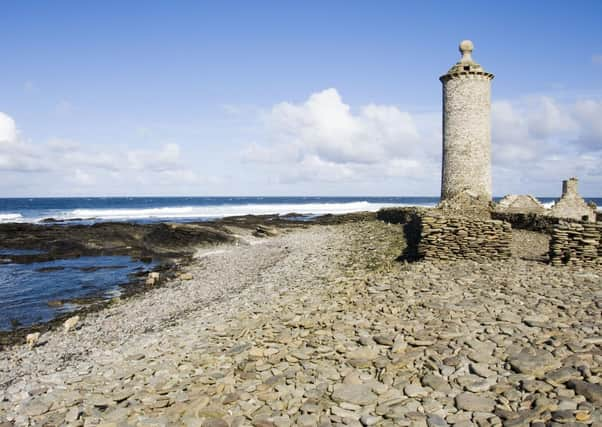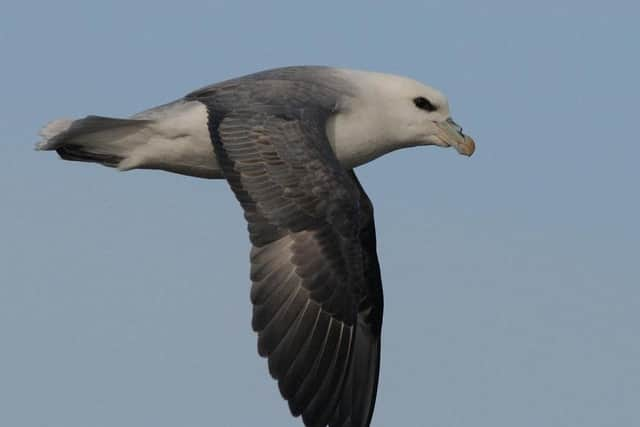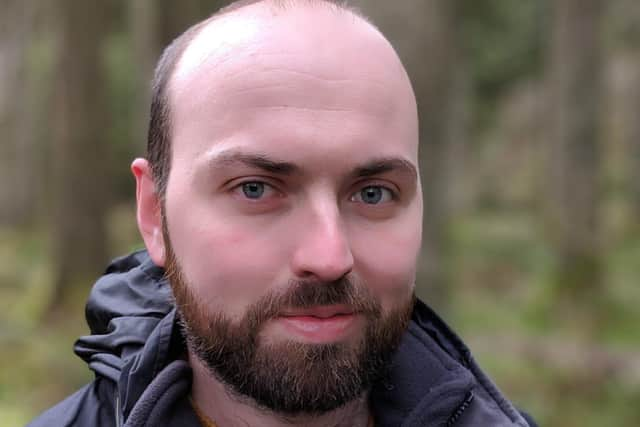How seven months on isolated Scottish island changed my life


I was washed up, like so many young men in London. I was wrung out. Highly strung and over-stressed, a claustrophobe caught in the spider’s web-like sprawl of west London. In the city I had lost sight of things that were important to me. Weeks merged into months. The seasons were elided. I had grown up with an interest in nature that in my teenage years had morphed, in the least cool way possible, into being a fanatically obsessed birdwatcher. This interest had always fuelled me but in the city I felt it had severed. I was running on fumes. I was drinking too much, panicking often, and I had given up on writing.
Unlike so many young men, I washed ashore on North Ronaldsay.
Advertisement
Hide AdAdvertisement
Hide AdNorth Ronaldsay is not the easiest place to get to. It requires you to overshoot the highlands, to get a ferry or a flight beyond the north coast of Caithness to Orkney Mainland. And then you need to go a bit further, ideally by plane from Kirkwall airport. It’s a 15 minute flight over the other outlying islands to the one beyond the rest, the land beneath the eight-seater plane getting progressively more warped and unlikely. North Ronaldsay lies beyond Sanday as a speck in the sea, looking north towards Shetland, east towards the Norwegian coastline, west to Greenland, and south towards shards of the hills and headlands of the rest of Orkney, a view that comes and goes with the weather.


I had answered an advert online to volunteer with North Ronaldsay bird observatory, and to my surprise they said yes. After three days of travel, my flight over was in a 50mph gale and mostly sideways, gripped by the breeze and shaken until I was terrified. The flight was not the only test. I was going from London to an island with only one bar, no fried chicken shops, and no pay. North Ronaldsay – three miles long, one mile wide – has a population that could fit on the top deck of a bus. I was 22. This was a severe sort of therapy.
I was there for birds. North Ronaldsay is one of the best birding destinations in Britain, not for what breeds there, but for what passes through. Islands can attract migrating birds in huge numbers. The larger the amount of birds passing through, the greater the likelihood of turning up a twitcher’s delight. That’s what I thought I was there for. I was, however, there in early March. About a month and a half too early for migratory birds. The job was to spend mornings working with birds (carrying out surveys and daily monitoring) with afternoons spent in the observatory building (maintenance, changing bed sheets, keeping the island’s source of catered accommodation functioning). For this I got bed and board. What I also got was freedom.
The first morning I walked out across a waterlogged field to the nearest section of coastline. The gale force winds continued, blowing spindrift and sea foam over the rocks I was attempting to walk over. Each step had to become deliberate, conscious, or I risked breaking an ankle on the foam that was as slippery as oil. I was slowing down, shedding the city speed. The air was glazed with salt and it felt good in my lungs. I had no expectations; I wasn’t searching for any special species. The great thing about March is that it’s a terrible month for birding. It is the dead end of winter in which anything is a bonus. It’s the sort of conditions that you can take yourself by surprise in.
It was another brutal gale in which I fell in love with the unlikeliest of birds. Icy winds were sweeping down from Greenland, cutting through my coat, raking the fields and whistling through the dykes. It was in the teeth of this gale that I first truly understood fulmars. A fulmar has the same size and soft-grey feathers as a gull and would be easy to overlook as one, except it is wildly different in spirit. Where the gulls were cowering, sensibly sheltering from the gales, the fulmars were demonstrating their aerial mastery. Gliding along the walls and coastline with utmost control. The fulmar is not a gull but a petrel, a relative of the albatrosses and it flies with their familial spell-binding skill. It is a true seabird and like all true seabirds, they come alive in the wind. The March gales of Orkney electrify them. I was supposed to be counting all the species but I couldn’t take my eyes off the fulmars.


As the season progressed, the weather did not improve. The migrant birds passed through. The twitcher’s delights turned up: multiple rare birds that made us so excited we all looked like we had seen a ghost, before we got very drunk. But it was the seabirds that really caught my heart. They were a constant in the upheaval. Everything else was coming and going. The seabirds stayed, like me, surviving despite the storms. The black guillemots nesting in the gaps between the rocks, painting their crevices white with guano, carrying back bouquets of fish. The arctic terns – the species of permanent summer where ever it goes across the globe – nesting in their thousands by the lighthouse, that would all rise up in a perfect white wave to chase off any potential predator.
What I realised there was that sometimes you need things to be stripped back to the essentials. Without distractions, I realised I had come to an island full of distractions. Suddenly everything seemed significant. I saw meteor showers, the northern lights, killer whales. I was noticing nature on a daily basis: orchids flowering, caddis flies, devil’s coach horse beetles. Birds suddenly in a field when there hadn’t been any the day before and wouldn’t be there the day after. I felt like I had been plugged into the world again.
I merely wanted to see some birds, but I ended up falling back in love with the world again, all through this tiny patch of rock, on the edge of things. This hadn’t been my intention at all, but sometimes a place takes you by the hand and shows you the way. A seven month stay on North Ronaldsay is long enough to see the entire migratory season. You see birds come, birds breed, and birds leave: the northern half of their life-cycle completed. Except for the fulmars. They stayed with me for my entire duration, their extended breeding cycle apparently synchronised to my own cycle of regeneration. I found hope in them as they brooded eggs, as they brought food back to their young. I was paid no money but I found a new currency: of faith in things and the realisation of myself. I watched the young fulmars leave for a life on the sea just before I left for another new life. And because of that, every time I return to North Ronaldsay it does something to my heart. A part of me is left there, the island and my heart intertwined with each other in my home that’s not home.
Advertisement
Hide AdAdvertisement
Hide AdYou might not need to go so far or be so drastic. It might not need to be a fulmar. The birds in your own garden or nearby park may suffice. But to watch them – to slow yourself down to the speed of trees and just notice what happens – is one of the greatest freely available pleasures we have. It might just help you too.
The Seafarers: A Journey Among Birds, winner of the Saltire First Book of the Year 2019, is published in paperback by Elliott & Thompson today, priced £9.99
Comments
Want to join the conversation? Please or to comment on this article.